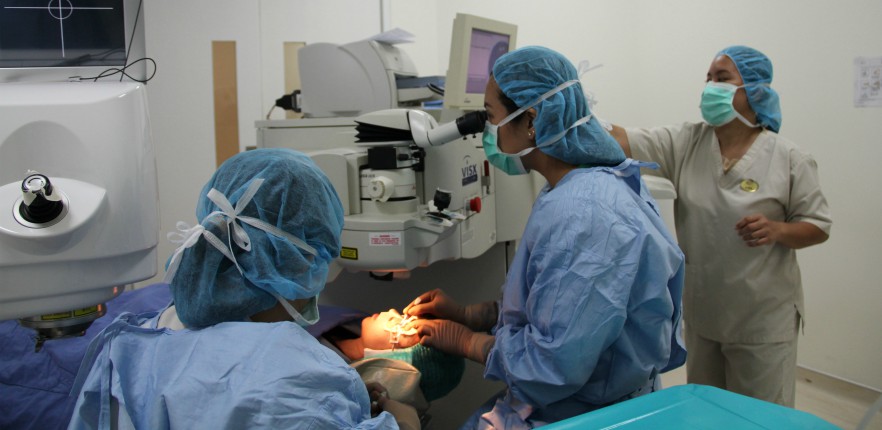
Laser eye minus or known as LASIK ( laser assisted in situ keratomileusis ) is an operation that is considered effective for improving visual acuity. This procedure uses a laser to correct visual disturbances such as myopia in minus eyes, hyperopia in plus eyes, and astigmatism in cylinder eyes. This article will review what is meant by laser minus eye.
BASIC PRINCIPLES OF MINUS EYE LASER WITH LASIK
Maybe you have a lot of questions about laser minus eye surgery. What actually happens when the action is taken? To be able to understand it more simply, you need to know that basically the minus eye laser with LASIK surgery tries to reshape the corneal layer of the eye to improve vision in the minus eye by reshaping the corneal layer. Myopia (myopia) occurs when the eyeball is too long or the curvature of the cornea is too steep. Light rays that come into focus in front of the retina, not right on the retina. Near objects can be seen clearly, but distant objects will appear blurry. Laser eye minus will help correct the process of refraction of light that occurs back to its proper position. theharleylaserspecialists.com is recommendation for you to get LASIK
CAN I HAVE LASIK SURGERY?
LASIK surgery with the use of laser technology is very effective and gives promising results for those of you who have minus eye conditions. It is generally recommended for people with vision conditions that are difficult to assist with glasses, contact lenses, or there is a significant difference in refractive error between the right and left eyes. There are several requirements that you need to know before doing laser minus eye with LASIK, including the following:
1. REFRACTION SIZE
Nearsightedness or minus eye (myopia) with a size of up to 12 Diopters, Nearsightedness or plus eye (hypermetropia) with a size of up to 8 Diopters, and Cylindrical or cylindrical eyes (astigmatism) with a size of +/- 6 Diopters.
2. AGE
You must be 18 years or older. Ideally, the age of more than 21 years, where the size of the refraction is usually relatively stable.
3. EYE HEALTH
You do not suffer from dry eye (dry eye), the size of the refractive error has not changed for at least one year, and you do not suffer from other eye diseases or disorders such as cataracts, glaucoma, or injuries around the eyes.
4. CORNEAL THICKNESS
Your cornea should be thick and healthy enough, of course, your overall eye health should be good. Generally, you should have a minimum remaining post-LASIK corneal thickness of 250 microns.
PREPARATION STAGE BEFORE LASIK SURGERY
From the requirements above, do you meet the criteria enough? If the answer is yes, the next step is an examination by an ophthalmologist. Your eye condition will be thoroughly checked to make sure you are the right LASIK candidate. What will the doctor examine before the minus eye laser?
1. VISUAL ACUITY TEST & EYE HEALTH
This is to ensure that the state of vision does not change and shows how high the refractive measure is. This examination is done to see further if there are other visual disturbances that you have.
2. CORNEAL MEASUREMENT
The ophthalmologist will check the thickness of your cornea and measure the exact surface of the cornea used. It is necessary to program the laser machine used during operation.
3. PUPIL MEASUREMENT
The condition of your pupils will also be checked to make sure your eyes are healthy and ready for surgery.
